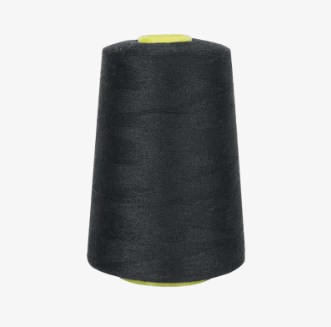As global environmental awareness rises and the concept of sustainable development becomes deeply ingrained, the textile industry is undergoing a profound transformation, and the rise of recycled yarn has undoubtedly become a focal point of this transformation. As a key vehicle for the circular economy in the textile sector, recycled yarn not only redefines the source of textile raw materials but also reshapes the ecological logic of the entire industry chain, becoming a critical link between environmental responsibility and commercial value.
The Birth of Recycled Yarn: A Transformation from "Waste" to "Renewable Resource"
The core value of recycled yarn lies in its disruptive impact on the traditional textile raw material system. The textile industry has long relied on natural fibers and virgin chemical fibers. The former are limited by natural resources like land and water, while the latter rely on non-renewable resources like petroleum, and their production processes generate significant carbon emissions and pollutants. The emergence of recycled yarn has turned its attention to various textile products and industrial scraps, once considered "waste." Through advanced technology, these once-waste materials have the potential to become high-quality textile raw materials. This transformation goes beyond simple recycling and reuse; it embodies a comprehensive resource circulation system. From the sorting and recycling of discarded textiles to environmentally friendly processing, and finally to the spinning process into yarn, every step embodies the integration of technological innovation and environmentally friendly concepts. It breaks the linear economic model of "production-consumption-disposal" and establishes a closed loop of "resources-products-recycled resources," providing a practical path for sustainable development in the textile industry.

Recycled Yarn Raw Material Characteristics: A Double Breakthrough in Environmental Protection and Performance
Recycled yarn draws from a wide range of raw materials, including discarded natural fibers such as cotton, linen, silk, and wool, as well as chemical fibers such as polyester and nylon. Compared to virgin raw materials, its environmental advantages are particularly prominent. During the production process, recycled yarn significantly reduces water consumption, lowers energy requirements, and significantly reduces emissions of greenhouse gases such as carbon dioxide. These "carbon reduction and energy saving" characteristics make it a key option for textile companies to achieve green transformation.
Concurrently, with continuous technological advancements, the performance of recycled yarn has achieved a qualitative leap. Whether in terms of strength, elasticity, dyeability, or breathability, recycled yarn can meet the demands of various textile products. From intimate apparel to outdoor wear, from home decor to industrial fabrics, its excellent comprehensive performance is gradually dispelling the stereotype of "recycled products" and demonstrating practical value comparable to virgin yarn.
Recycled Yarn Production Process: Technological Innovation Drives Industrial Upgrading
The production of recycled yarn is a technology-intensive process, requiring precise control and advanced equipment at every step. From the crushing and sorting of waste textiles to the regeneration and combing of fibers, and finally to the spinning process, every step is a reflection of technological innovation.
In the raw material processing stage, efficient sorting technology precisely separates different types of fibers, ensuring the purity of the regenerated fibers. Advanced cleaning processes remove impurities while maximizing the original properties of the fibers. In the spinning stage, new spinning equipment and processes not only improve production efficiency but also optimize the structure and properties of the yarn based on the characteristics of the different regenerated fibers, resulting in superior performance in subsequent weaving, dyeing, and finishing processes. These technological innovations not only improve the quality of recycled yarn but also reduce production costs, continuously strengthening its competitiveness in the market. Technological advancement is arguably the core driving force behind the rapid development of the recycled yarn industry, pushing it from extensive production to refined, high-quality production.

The Application Value of Recycled Yarn: Leading a New Trend in Sustainable Fashion
On the consumer side, with the growing popularity of the concept of "sustainable fashion," consumer demand for environmentally friendly products is increasing, opening up a vast market for the application of recycled yarn. An increasing number of clothing brands are incorporating recycled yarn into their product lines, launching clothing lines made from recycled yarn. This not only meets consumers' environmental demands but also adds new value to the brands.
The application of recycled yarn in the fashion industry extends beyond clothing to accessories, home textiles, and other categories. Its unique environmental properties and diverse performance properties have provided designers with a wealth of creative inspiration, giving rise to numerous outstanding works that combine environmental awareness with a fashionable aesthetic. This combination of "environmental protection + fashion" is leading a new consumer trend, making sustainable lifestyles a new fashion symbol.
The rise of recycled yarn is not only an inevitable choice for the textile industry to address environmental challenges, but also a significant step towards a circular economy. It demonstrates that environmental protection and development are not mutually exclusive, but can promote and coexist synergistically. In the years ahead, recycled yarn will continue to write a green chapter for the textile industry and contribute to building a more sustainable world.

 English
English русский
русский Español
Español











